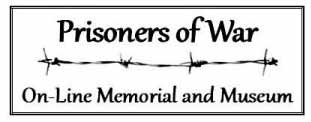The Lamsdorf Long March
In January 1945, as the Soviet armies resumed their offensive and advanced into Germany, many of the prisoners were marched westward in groups of 200 to 300 in the so-called Long March. Many of them died from the bitter cold and exhaustion. The lucky ones got far enough to the west to be liberated by the American or British armies. The unlucky ones were ‘liberated’ by the Soviets, who instead of turning them over quickly to the western allies, held them as virtual hostages for several more months, until the British agreed to release to the Soviet Union POWs of Soviet origin who had been fighting on the German side, which left the British Government with little choice on the matter, even though they were understandably reluctant to hand these men over to the Soviet Union for their inevitable execution. These soldiers from states such as Latvia, Lithuania and Estonia for example, had fought with the Germans in an effort, as they saw it, to release their own homelands from Soviet occupation and oppression.
Many of the allied POWs held by the Soviets were finally repatriated towards the end of 1945 through the port of Odessa on the Black Sea.
Some people have referred to this Long March as a ‘death march’. This term is deliberately avoided on this website (as it also was by the authors of ‘The Last Escape’ and the producer of the documentary ‘The Long March to Freedom’). It was a horrific experience and it is true that many died on this march, but the vast majority did not. We do not use the term ‘death march’ out of respect for those ‘marches’ that truly were ‘death’ marches:
- On January 18, 1945, just days before the Red Army arrived at Auschwitz, 66,000 prisoners were marched to Wodzislaw, where they were put on freight trains to the Gross-Rosen, Buchenwald , Dachau , and Mauthausen concentration camps. Almost one in four died en route. On January 20, 7,000 Jews, 6,000 of them women, were marched from Stutthof ‘s satellite camps in the Danzig region. In the course of a 10-day march, 700 were murdered. Those who remained alive when the marchers reached the shores of the Baltic Sea were driven into the sea and shot. There were only 13 known survivors.
- The Sandakan Death Marches were a series of forced marches in Borneo from Sandakan to Ranau which resulted in the deaths of 2,345 Allied prisoners of war held captive by Japan. By the end of the war, of all the prisoners who had been incarcerated at Sandakan and Ranau, only six survived, all of whom had escaped.
- There are other examples of similar death marches.
Each of the tragedies referred to above were caused by the deliberate cruelty of the captors. On the Long March (ie the evacuation of the POW camps) there were some instances of cruelty, but most of the deaths were cause by illness, the cold, malnutrition or the action of allied aircraft. The whole situation was caused, not by the deliberate cruelty of the captors but by a totally mismanaged evacuation that should never have happened. Terrible though it was, it was not in the same category as the ‘death marches’ described above.
You can read more and see the routes some of the men took in ‘Taking the Long Way Home‘.

My dad, Private George Airey of the QVR started the march on 22nd January 1945 from Stalag v111b. I have the diary he kept daily until his repatriation on 8th May.